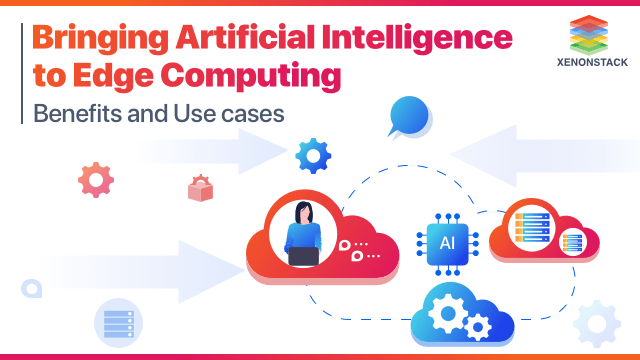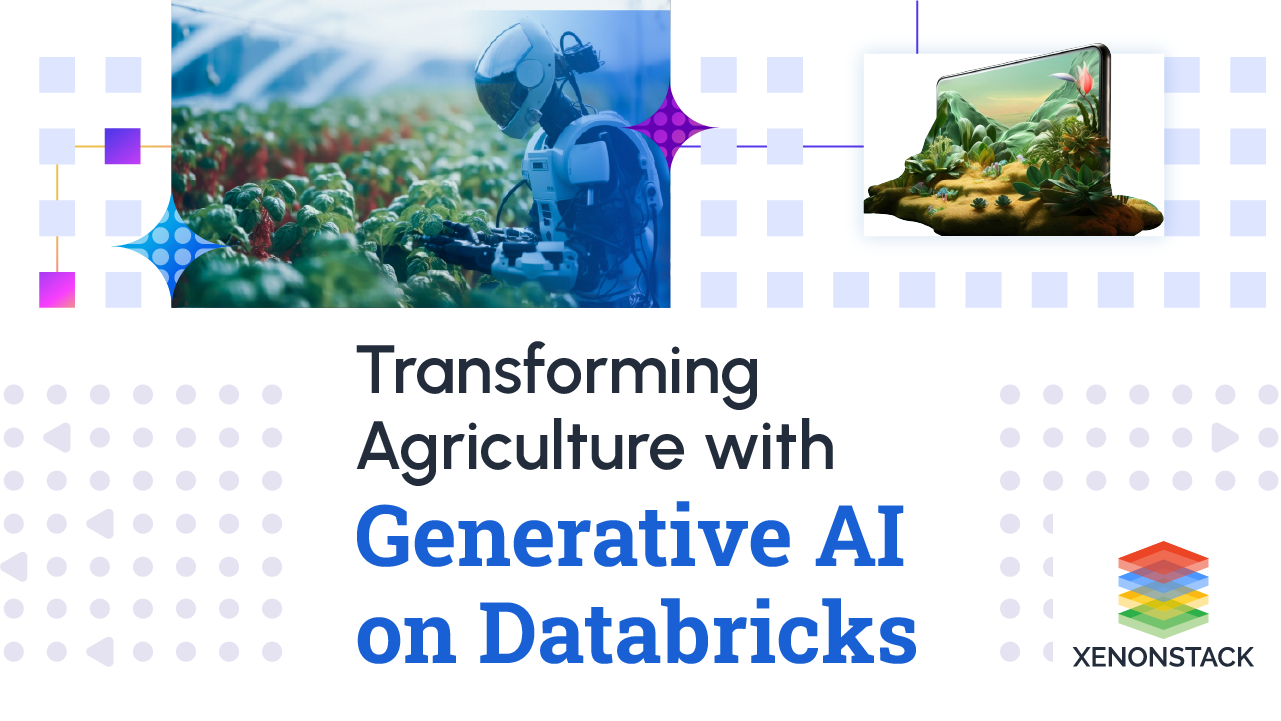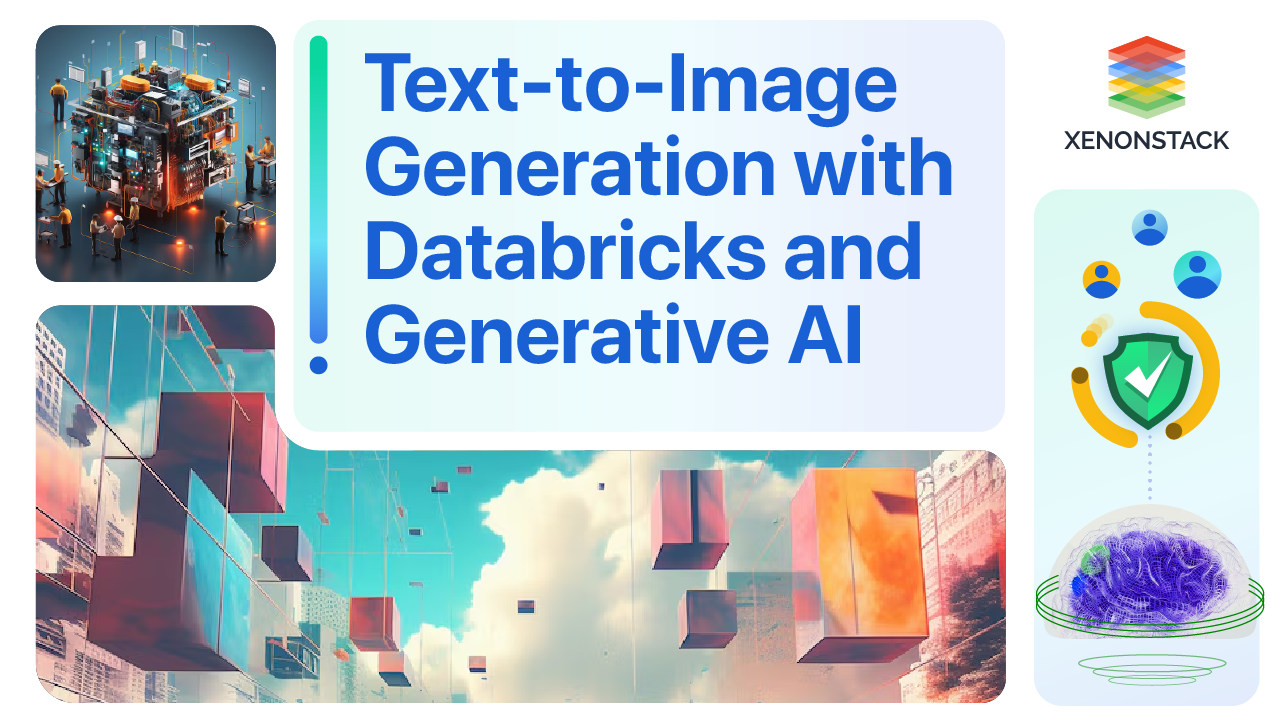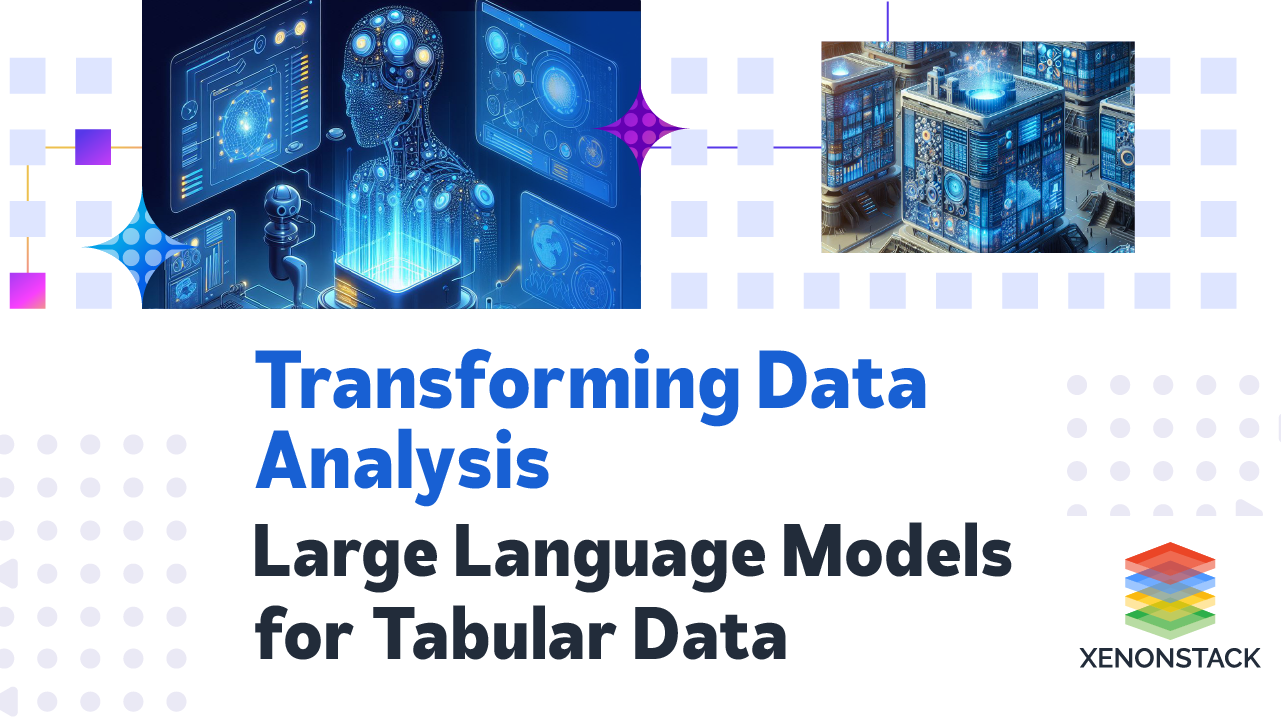
Introduction of AI in Edge Computing
The rapid rise of the applications powered by Artificial Intelligence raises the data center's technical requirements, which generates high costs. The cloud is not a valid alternative in many cases. In these cases, the best option may be edge computing, which can provide the necessary computing power and minimize service delivery latency. Therefore it is necessary to Bringing AI into Edge Computing.AI applications are more powerful and flexible than traditional applications, which can only respond to the inputs programmers expect. Taken From Article, What is Edge AI?
Overview of Edge Computing
- The term "Edge computing" refers to the processing as an appropriated worldview. It brings information about data nearer to the device or information source.
- Edge Computing allows data generated by IoT to be processed near its source rather than sending the data to a great distance to data centers or cloud. It's connected to dealing with persistent data near the data source, which is considered the 'edge' of the association.
- It's connected to running applications as truly close as possible to the site where the data is being made instead of bringing together cloud or data accumulating zone.
- Edge computing was made due to IoT devices' momentous advancement, which partners with the web to tolerate information from the cloud or pass on data back to the cloud.
AI gives limited but faster and secured outcomes to industries, where bigger decisions proceed on remote space. Click to explore about our, Edge AI for Automation in Industries
What is Edge AI?
-
Edge AI is the combination of Edge computing and Artificial Intelligence. With Edge AI, AI algorithms are executed locally on a hardware device using the data collected from Edge computing.
As the data is collected and processed in real-time, it reduces power consumption as well as data costs since the device doesn't need to be connected to the internet at all times. Edge computing brings processing, computation, and data storage closer to where it is generated and collected instead of relying on moving it to a remote location such as a cloud.
Does Edge AI exist?
Yes, it does. There are some accessible real-time instances in which the involved algorithms are used to process the data right in your device instead of sending it to cloud for obtaining results-
- iPhone registering and recognizing your face for unlocking the phone in milliseconds.
- Google Maps are pushing alarms about bad traffic.
- Autonomous vehicles to put emergency brakes if AI algorithms predict any collision.
- A security camera must recognize intruders and react immediately.
- If a sensor predicts an explosion in a chemical plant, the plant needs to be shut down immediately.
The edge is an endpoint where data is generated through some type of interface, device, or sensor. Source: The Edge- What Does It Mean For Artificial Intelligence?
What are the Benefits of Edge AI?
Edge AI's benefits are speed and can detect the issues by integrating smart devices and functionality to deploy AI at the edge for insights.- Its flexibility enables smart devices to support different industries.
- Edge AI also offers high safety and security level with enhanced security features, and edge AI-powered devices help minimize this risk.
- No special understanding is mandatory to operate the Edge AI-empowered devices. The device automatically offers the necessary insights on the spot through rich graphical interfaces or consoles.
- It reduces cost and latency times for an improved user experience. This facilitates the integration of technologies focused on the user's experience, where you can interact in real-time to make payments.
What are the Disadvantages of Edge AI?
- Edge devices can need more hardware and software for optimum output and local storage requirements, and costs may rapidly escalate as they're spread over many local geographies.
- Some critics argue that while edge computing is beneficial, it also lacks the computing power of a cloud-computing infrastructure.
- When you depend on edge devices, you get a bit more variety of machine styles. As a result, failure is more common.
The main focus of Edge Analytics IoT and data science is speed and decentralization.Taken From Article, Edge Analytics: What is it and what are its scope in IoT?
Drivers of Edge Computing and Edge AI
Edge computing is a distributed computing model that does necessary computations and stores data closer to the location of the device. There is a misunderstanding that edge computing will replace Cloud computing. On the converse, it functions in association with the Cloud. Big data will always be processed on the Cloud. But, instantaneous data produced by the users and associates only to the users can be computed and processed on edge. There are numerous drivers of Edge Computing and Edge AI.
- Latency - The apparent reason for tasks to be done on edge is latency. The delay while moving data to the Cloud for processing and then results are transmitting back over the network to a local device. In some situations, AI models must be processed at the edge or at the device itself so that decisions can be made faster without relying on network connectivity and moving extensive data back and forth over a network.
- Privacy - In some scenarios, the sharing of personal and sensitive data (e.g. Finance sector) across boundaries has raised concerns regarding data privacy. Here, AI on edge helps by only sharing the data that requires further evaluation, which decreases the amount of data transferred and reduces the probability of breach in privacy.
- Performance - AI models can process the data much quicker on the device itself as compared to the Cloud as the data does not need to travel back and forth. But there are still events where data processing at the Cloud is better. When judgments require extensive computational power and do not need to be executed in real-time, AI should stay in the Cloud. For example, In healthcare, when AI is used to interpret an ECG or to analyze crop quality (in agriculture), data collected by a drone over a farm where one can wait a few minutes or a few hours for the decision, it is better to do this processing in the Cloud.
- Bandwidth - To generate insights from AI, data needs to move to the Cloud. As connection speed differs in various parts of the world and sometimes it is not easy to transfer data from/to the server from such remote locations. On the other hand, AI at the edge solves the problem by sending only the part of the required data for further analysis.
Edge computing is transforming how data from millions of sensors worldwide are treated, stored, and distributed. Click to explore about our, Edge Computing for Video Analytics
Use Cases for AI in Edge Computing
AI is essential because it's a technology that enables a high decision-making level at the edge. Edge Computing wouldn't have ever taken off its functionality. And however, AI helps so many processes at the edge, reducing the need for centralized computing power.
Some Use Cases
- Map Projection
- Dual-facing AI dashcam
- Enhance security in the shop/office
- COVID Recovery
- Satellite Imagery
Map Projection
- Pilot AI has built up a set-up of calculations that move AI surmising remaining tasks at hand from the cloud to the edge devices. That gives a private, secure, and quick approach to settle on choices near the information source.
- The utilization case is getting more relevant in spots like retail locations, industrial facilities, structures, and workplaces. With the QCS610 and QCS410 (It is a high-performance smart camera application), Pilot AI can follow the development and total contributions from numerous savvy cameras in a 3D space onto a 2D guide.
- By mapping out traffic, the administrators of an office, retail location, or assembling plant can decide how close individuals are to each other and give social separating alarms. That is particularly valuable in cafeterias, lobbies, or entryways, where individuals normally assemble. The capacity to follow an individual with suspected raised internal heat levels can help oversee influenced zones. Examination produced by Pilot AI can send ongoing alarms and, in the more drawn-out term. To help organizations adjust floor plans depending on where individuals will be in the general assembly.
Dual-facing AI Dash camera
- AI Dash camera intelligence run cams assist organizations with improving wellbeing, security, and visibility. Dashboard-mounted cameras use edge handling for the constant occasion and article recognition, with the object of detection and the goal of reducing vehicle accident rates.
- A double confronting run dashcam utilizes AI and edge figuring to examine driver conduct (focusing, resting off, taking eyes off the street) and road conditions continuously, bringing down the danger of accidents.
- AI dash cams can likewise identify occasions and send alarms. If the vehicle administrator is driving distractedly, running a red light, or moving through a stop sign. As a feature of a stage for the executives and driver wellbeing. The scramble cam records and stores footage on occasions, such as sudden slowing down, unexpected braking, and crashes. The device can automatically upload the footage to the cloud for later viewing.
Enhance security in the Shop/Office
- Edge computing's computer vision can ensure security and prevent theft at programmed pay stations on account of ongoing video examination. If there should be an occurrence of crisis or irregular circumstances, activity is set off progressively. This permits clients to appreciate shopping whenever of day and night.
COVID Recovery
- Here in this use case for buildings, offices, and shopping malls, devices' designs are to screen people entering the building. If the people/visitors have an elevated temperature or are not wearing a mask, they can detect it using AI technology.
- This device can notify a human monitor to prevent them from entering if connected to a building security system. It can automatically grant or deny access to the person while entering the building.
Satellite Imagery
- Using AI for space technology will be more expensive. Still, the last decade of innovation has made space more accessible. Here, the in-depth analysis of satellite images provides a better understanding of the various systems with different systems' different data. We are using AI in Agricultural systems.
- With the help of geospatial data in an agriculture system, farmers can easily get information about the crop distribution pattern across the globe and the weather changes in agriculture, among different applications.
Multi-Access Edge Computing (MEC) enables data to be process, analyze, and transfer at the network’s edge to offload the analyzed data from the centralized cloud to the edge of the network. Source: Multi-Access Edge Computing
Bringing AI in Edge Computing
- As we see the clear trends of AI towards a future powered by the intelligent cloud and edge. They are computing at a massive scale that the public cloud can use and powered by AI for every application type.
- The Edge AI is a continually expanding set of connected systems and various devices that gather together and analyze data according to end-user.
- Expanding the volumes of the information across all the associations. The client has been getting some information about the flexibility to convey AI abilities in various conditions.
- The client can quickly investigate the data where the information involves conveying ongoing bits of knowledge that is profoundly responsive and relevantly mindful of the administrations. That client conveys on their premises and doesn't send the client information model. The picture or text that analyzes while conveying the AI on the cloud.
What are the benefits of bringing AI to Edge Computing?
- Increasing demand of AI decision as quickly increase the demand of Edge AI.
- The client can quickly investigate the data to convey ongoing bits of knowledge at the edge rather than wasting time sending data to the cloud.
- Thus it reduces the load first to send the data to the cloud and then process.

Conclusion
Edge Computing is the medium-term future of Cloud Computing. This does not mean that one technology will replace the other. Instead, they will be complementary so that the services' general benefits grow without placing excessive loads on the network. Implementing Edge AI in Edge Computing is because of its flexibility and enabling smart devices to support different industries.
- Discover more about Edge Computing vs Cloud Computing
- Click to explore Top 5 Edge Computing Platforms in 2023


